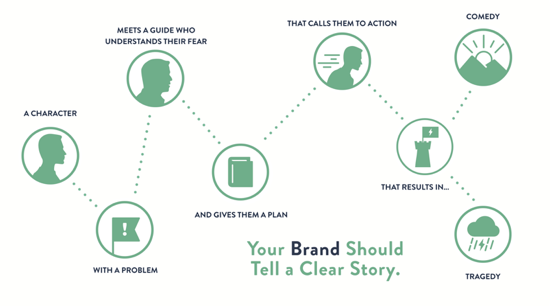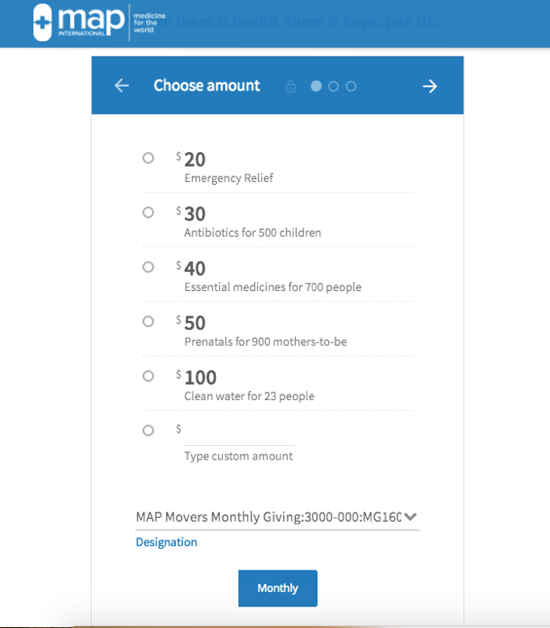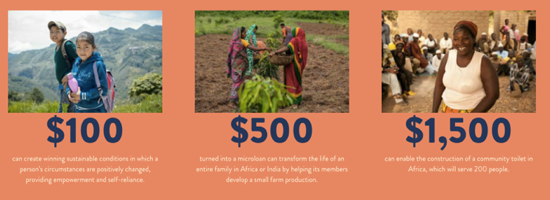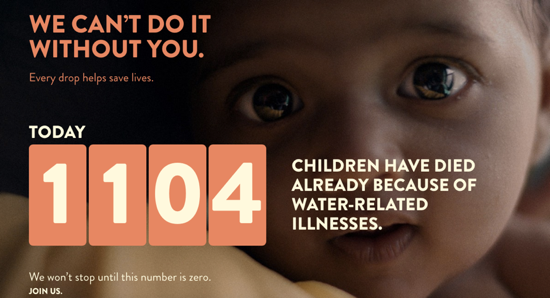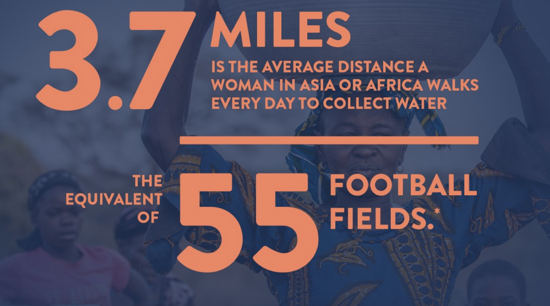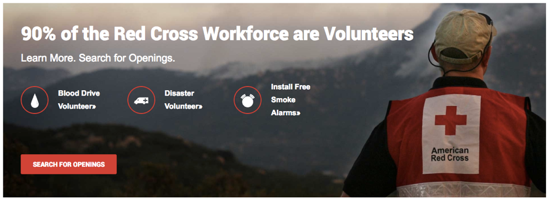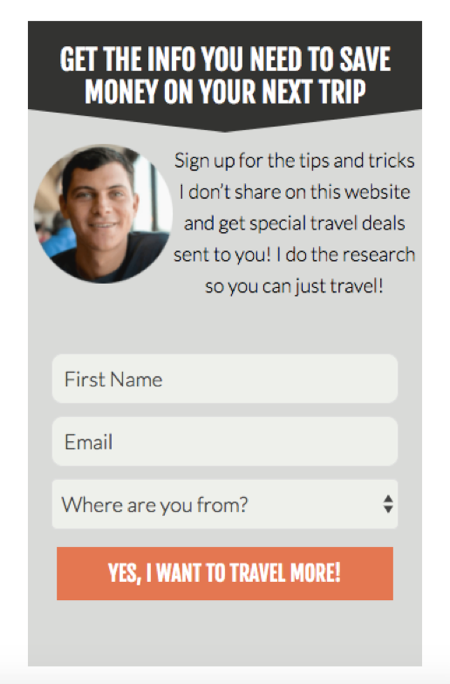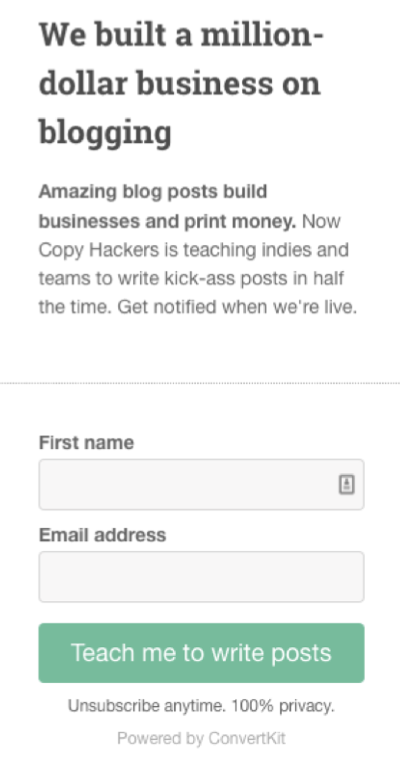A guide to online copywriting when you aren’t selling anything
For some odd reason, people seem to think that if you’re not selling anything, and you’re only asking people to donate, volunteer or even subscribe to your blog, you don’t need good copywriting. This couldn’t be further from the truth.
Here’s the thing:
Whether you’re a business asking people to buy your product or a charity asking people to donate, what you’re actually asking is for people to give you their time and their money. And you can’t do that without good copy that explains why they should take the action you want them to take, and what’s in it for them.
To do that you have to be a good storyteller. You have to come up with an unforgettable story, one that creates buzz and makes people want to get involved.
So, how do you do that? How do you use the written word to drive action – raise funds for your charity, entice more people to volunteer, get more members for your church or sports club?
Following are a few tips on changes you can make to your copy to get more people involved.
How to write enticing copy when you aren’t selling anything
Know who you’re writing for
The key to successful copywriting is understanding people.
So if you want to write effective copy, you’re going to have to first figure out who your audience is and understand what drives them to take action.
Donors. Volunteers. Members. Blog readers. When you write copy, it has to be about them, and not about your charity, your sports group, your travel blog.
If you don’t stop trying to attract every living human being on the planet and start learning to speak to your ideal persona, you won’t achieve your goals.
So learn more about your audience and only target those people who will partner with you. Then you’ll be able to create copy and navigational paths that speak to their needs.
Choose a copy goal
Before you start writing a word, ask yourself what you want your readers to do. What action do you want them to take after reading your copy?
Lots of non-profits and community groups make the mistake of choosing fluff goals like “to raise awareness”, “to educate”, etc.
Steer clear of these general goals and go with an active one instead like:
- We want the reader to subscribe to our blog/ newsletter
- We want the reader to donate £50
- We want the reader to volunteer one hour a week.
Keep the spotlight on your audience
If you want to learn to write copy, the most important thing to remember is this:
It’s NOT about you.
No one really cares about your cause, your group, your club, your blog. They care about what’s in it for them.
So if you run a charity or a club and your idea of enticing copy is to write how in need you are, and how much you need people to give or to volunteer, don’t be surprised if very few get involved.
That’s because instead of making people feel like they are part of something that inspires them, that makes them feel good, you’re making them feel like they have to give up something – their time, their money – to help your cause.
To make sure your audience is always in the spotlight take a look at your copy and ask yourself: “What’s in it for them?”
You may need to rewrite your copy to ensure every block of text on your site benefits your readers.
Grab their hearts
We all make buying decisions for emotional, rather than rational reasons. We buy to feel good, to be the envy of friends, to worry less, to feel excited about something.
The people who read your copy are the same. They may need facts and figures to justify their decision to take action – to make a donation, to volunteer, to subscribe to your blog, to spread the word – but the decision itself is made for emotional reasons.
A donor may give to memorialise a loved one or to feel a rush of power. A volunteer may want to make a difference in the world. A blog subscriber may want to get educated. A club member may be feeling lonely and looking to socialise with new people.
It’s your job to identify what grabs your audience’s hearts and use that in your copy to entice them to take action.
Create stories worth spreading
We all share a love of storytelling. We’re naturally sucked into narratives about unusual, shocking, interesting, fascinating people and places.
So aim to tell a tale of something remarkable, something that people want to forward to their friends, post on their Facebook walls and tweet to their followers. Something that’s so amazing that it can’t go unnoticed.
Remember The Ice Bucket Challenge? Or Clean Water’s #FirstWorldProblems campaign? These campaigns went viral so quickly not because of the cause, but because of the entertainingly genius marketing ideas and how easy people could get involved and donate.
Don’t know how to approach telling a story? Take a look at this infographic from StoryBrand to get an idea of how this works:
So the idea is to create a story around your organisation or community that:
- Introduces real characters
- Presents real conflict
- Invites your audience to be an active part of the solution
Think small in terms of the action you want them to take
Your audience may feel overwhelmed or even helpless in the face of messages like “help end hunger in Africa” or “give access to safe water in Latin America”.
A different, more effective tactic is to make your calls-to-action doable by communicating the value of their donation to your cause: “your £35 donation gives Jonas a hot lunch every day for a week”.
This also helps to create an image that resonates in the mind of the potential donor, who can see the kind of difference they can make with their money.
Here’s how MAP International explains how each amount can make a difference:
And here’s how One Drop explains how a donation can help:
Use numbers for added credibility
Numbers have tremendous power. They can strengthen your copy and add credibility, enticing more people to take action.
Here are a few examples:
Make your copy easy on the eye
Short attention spans, busy schedules, and the like are all culprits for your audience not fully reading your copy.
At the same time, a wall of text is guaranteed to drive away all potential donors, no matter how devoted they are to your cause.
So make sure your copy is easy to read, skim and scan. That means short sentences, bullet points, visuals, descriptive headlines and subheadings.
What if you’re a blogger looking to get email sign ups?
What if you have a travel, cooking or running blog where you’re not selling anything but simply sharing your recipes, advice, experiences and adventures with the world?
How can you entice more people to sign up to your mailing list?
In this case, focus your message on what people are gaining by signing up.
So, instead of a generic “join my mailing list”, try adding a more enticing title and description where you tell them about all the perks of subscribing to your blog or downloading your travel or recipes ebook:
Check out these examples:
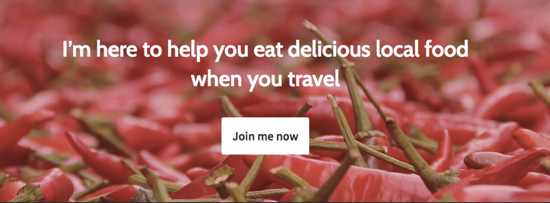
Finally, don’t forget about that powerful call-to-action. While you can always go with a simple “sign me up” or “subscribe” wording, that doesn’t reinforce the benefits of signing up.
Here’s an example of a strong call-to-action for your inspiration:
For more tips on how to build your mailing list, read these articles:
Beginner’s guide to building your first email list
Eight easy ways to get more subscribers to your mailing list
Wrapping up
Writing copy when you’re not selling anything is not that different from writing copy for business. You still have to get to know your audience to help maximise the impact of your website copy. But more importantly, you need to tell an amazing story that can’t go unnoticed. It’s what’ll ultimately entice people to take the action you want them to take.

